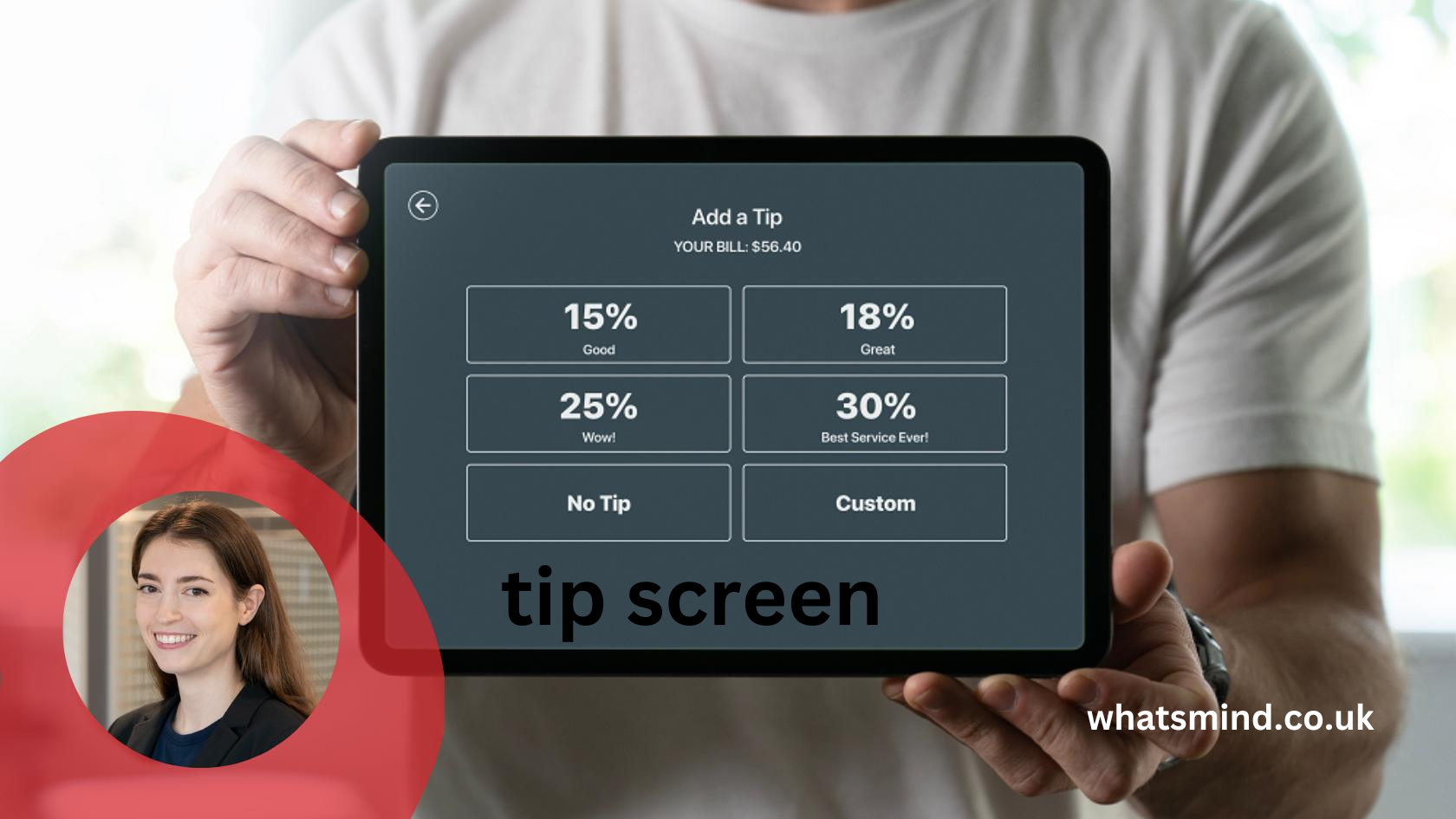Introduction
In today’s fast-paced digital world, tipping has evolved from leaving cash on a table to tapping a screen. The “tip screen” is now a common sight in many service industries, seamlessly integrated into payment systems. But with this shift comes new questions and challenges: How does digital tipping change our behavior? What impact does it have on businesses and workers? This article delves into the complexities of the tip screen, exploring its evolution, impact, and the etiquette surrounding it.
What is a Tip Screen?
A tip screen is a digital interface that prompts customers to leave a gratuity when making a payment. Typically, it appears on devices like tablets or smartphones used in restaurants, coffee shops, or service counters. As digital payments become the norm, tip screens are increasingly common, offering suggested tip amounts and making the process of tipping quicker and more convenient.
The Evolution of Tipping Culture
Traditionally, tipping involved leaving a percentage of the bill in cash, often as a personal gesture of appreciation. However, as society has shifted towards digital payments, the practice of tipping has also evolved. Today, tip screens have become the new norm, changing how we think about and engage in tipping. Technology has played a significant role in this shift, influencing our tipping habits and expectations.
How Tip Screens Work
Tip screens are powered by integrated payment systems that allow businesses to accept digital payments. When a customer completes a transaction, the tip screen offers various tipping options, usually with preset percentages (e.g., 15%, 20%, 25%) or a custom tip option. This technology not only simplifies the tipping process but also subtly encourages higher tips by suggesting amounts upfront.
The Psychology Behind Tip Screens
Tip screens tap into the psychology of social pressure and decision-making. When presented with a tip screen, customers may feel a sense of obligation to tip, especially when the service provider is watching. The suggested tip amounts on the screen can also influence decisions, making customers more likely to tip higher than they might have with cash. Emotional responses, such as guilt or gratitude, can further drive tipping behavior.
The Impact of Tip Screens on Businesses
For businesses, tip screens offer a way to increase revenue without raising prices. Digital tipping has been shown to boost overall gratuities, contributing to higher earnings for service workers. Additionally, the convenience of tip screens can enhance customer satisfaction, leading to repeat business. However, small businesses may face challenges, such as the cost of implementing the technology or the potential backlash from customers who feel pressured to tip.
The Impact on Service Workers
Service workers have mixed feelings about tip screens. On one hand, digital tipping can lead to increased earnings, especially in high-traffic environments. On the other hand, the reliance on tip screens may shift customer expectations, with some patrons tipping less frequently or at lower amounts. Many workers report feeling more dependent on tips as a significant portion of their income, making them vulnerable to fluctuations in customer generosity.
Etiquette and Ethics of Digital Tipping
Navigating the etiquette of digital tipping can be tricky. Generally, it’s considered polite to tip on a tip screen in situations where you would tip if paying with cash. The amount you tip should reflect the quality of service, though the suggested amounts on the screen can serve as a guideline. From an ethical standpoint, businesses should ensure that tip screens are implemented fairly, without pressuring customers, and that tips are distributed equitably among workers.
The Future of Tip Screens
As technology continues to advance, tip screens are likely to become even more prevalent. Emerging trends include AI-driven tipping systems that tailor suggestions based on customer behavior and the integration of tipping into more types of transactions. However, as tip screens become more sophisticated, they may also face scrutiny regarding their impact on consumer behavior and fairness.
Pros and Cons of Tip Screens
Pros:
- Convenience: Tip screens streamline the tipping process, making it quick and easy for customers to leave a gratuity.
- Increased Tips: Suggested amounts on tip screens often result in higher tips, benefiting service workers.
- Transparency: Digital tips are recorded and tracked, providing clarity for both workers and employers.
Cons:
- Pressure: Some customers feel pressured to tip, especially when faced with suggested amounts.
- Cost: Implementing tip screen technology can be expensive for small businesses.
- Fairness: There are concerns about how tips are distributed and whether all workers benefit equally from digital tips.
Case Studies: Successful Implementation of Tip Screens
Restaurants: Many restaurants have successfully implemented tip screens, leading to increased tips and customer satisfaction. For example, a local café saw a 20% increase in tips after introducing a tablet-based payment system with a tip screen.
Retail: Some retail stores have adopted tip screens, especially in service-oriented areas like personal shopping or customer assistance. These businesses report higher customer satisfaction and increased employee morale as a result.
Lessons Learned: Successful implementation of tip screens requires clear communication with customers, proper staff training, and a fair system for distributing tips.
How to Implement Tip Screens in Your Business
If you’re considering adding tip screens to your business, start by selecting a payment system that integrates tipping options. Train your staff to handle digital tips professionally, and communicate with customers about how tips are used. Consider offering both preset and custom tipping options to give customers flexibility.
Consumer Perspectives on Tip Screens
Surveys show that consumers have mixed feelings about tip screens. While many appreciate the convenience, others feel uncomfortable with the pressure to tip. Common complaints include the perceived obligation to tip even for minimal service and the lack of transparency in how tips are distributed. To improve the customer experience, businesses should aim to use tip screens in a way that respects customer preferences and provides clear information about tipping.
The Role of Regulation in Digital Tipping
As digital tipping becomes more widespread, there is a growing need for updated regulations to protect both consumers and workers. Current laws governing tipping may not adequately address issues related to digital payments, such as transparency and fairness. Businesses should stay informed about legal requirements and ensure compliance to avoid potential disputes.
Conclusion
The rise of the tip screen marks a significant shift in how we engage with tipping culture. As technology continues to shape our interactions, it’s important to understand the impact of digital tipping on businesses, workers, and consumers. By navigating this new landscape with awareness and consideration, we can ensure that tipping remains a positive and equitable practice in the digital age.
FAQs
- What is the appropriate amount to tip on a tip screen?
- The appropriate amount varies, but a common guideline is to tip 15-20% for good service. The tip screen usually offers suggested amounts to help guide your decision.
- Are tip screens optional for businesses?
- Yes, businesses can choose whether or not to implement tip screens. However, they are becoming increasingly popular due to the convenience they offer.
- How do tip screens affect service quality?
- Tip screens can positively affect service quality by incentivizing workers to provide excellent service in the hope of receiving higher tips.
- Can I adjust the suggested tip amount on a tip screen?
- Yes, most tip screens allow you to choose a custom tip amount if you prefer not to use the suggested options.
- What should I do if I feel pressured to tip on a tip screen?
- If you feel uncomfortable, you can always choose a lower tip amount or skip the tip altogether. It’s important to tip based on the quality of service rather than pressure.



